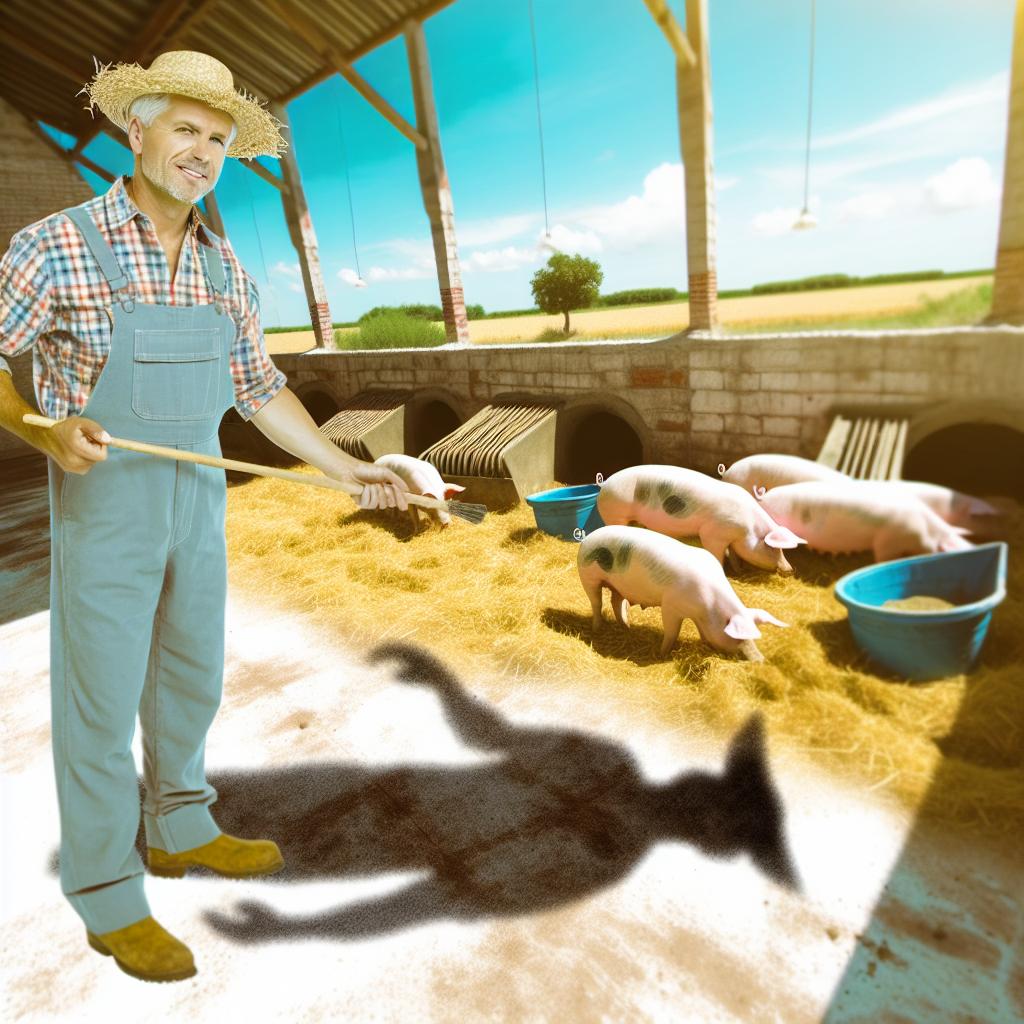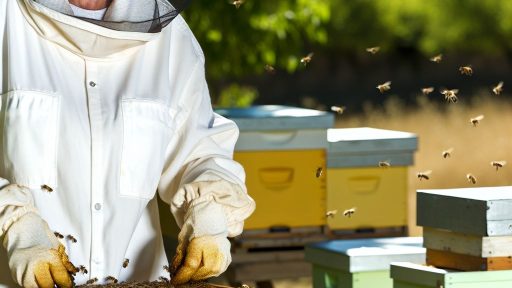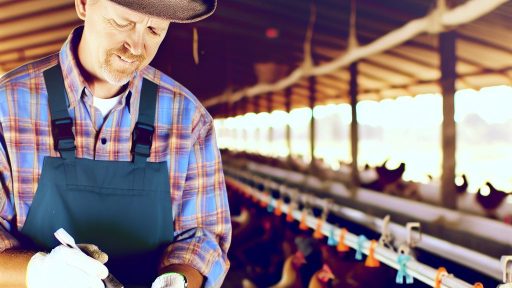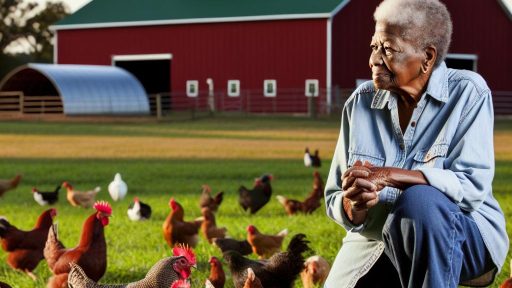Introduction to Swine Rearing and Its Importance
Swine rearing plays a crucial role in agriculture.
Pigs are versatile animals with high adaptability.
This practice contributes significantly to food security.
Furthermore, it provides economic benefits to farmers.
In many regions, pork is a primary source of protein.
Thus, understanding optimal housing for swine is essential.
Benefits of Proper Housing
Proper housing promotes the health and growth of pigs.
It protects them from harsh weather conditions.
Moreover, it minimizes the risk of disease transmission.
Good housing also enhances the overall productivity of the herd.
Economic Implications
Investing in adequate housing can yield substantial returns.
Better living conditions result in increased weight gain.
Additionally, they lead to improved feed conversion efficiency.
Therefore, farmers can achieve higher profits through better management.
Social Impact
Swine rearing also supports local economies.
Transform Your Agribusiness
Unlock your farm's potential with expert advice tailored to your needs. Get actionable steps that drive real results.
Get StartedIt creates job opportunities across various sectors.
Moreover, it contributes to community stability and growth.
As such, recognizing the importance of swine housing is critical.
Basic Housing Requirements for Swine
Size Considerations
The size of a swine housing facility is crucial for animal welfare.
Each pig requires enough space to stand, lie down, and turn around easily.
Generally, a minimum of 8 to 10 square feet per pig is recommended.
Additionally, larger breeds may require more space for comfort.
Proper sizing helps prevent stress and aggression among pigs.
Layout and Design
The layout of a swine housing unit greatly impacts management efficiency.
Good practice includes separate areas for feeding, sleeping, and breeding.
This separation helps reduce the spread of disease and promotes hygiene.
Implementing sloped floors aids in drainage and cleaning processes.
Good ventilation is also essential for air quality and temperature control.
Environmental Control
Maintaining a comfortable environment is vital for optimal swine growth.
Temperature regulation ensures that pigs do not experience heat stress.
In colder climates, providing adequate insulation prevents chilling.
Consistent humidity levels also play a role in overall health and welfare.
Consequently, effective environmental controls can improve feed efficiency.
Safety Features
Swine housing must prioritize the safety of the animals.
Surfaces should be smooth to prevent injuries among pigs.
Ensure fencing is sturdy and free from sharp edges or protrusions.
Regular inspections uncover potential hazards within the housing area.
Ultimately, a safe environment promotes better overall health in swine.
Ventilation Needs for Comfortable Swine Housing
Importance of Proper Ventilation
Proper ventilation is crucial for swine housing.
Showcase Your Farming Business
Publish your professional farming services profile on our blog for a one-time fee of $200 and reach a dedicated audience of farmers and agribusiness owners.
Publish Your ProfileIt helps maintain air quality inside the barn.
Good airflow reduces harmful gases like ammonia.
Additionally, proper ventilation regulates humidity levels.
This regulation prevents heat stress during warm months.
Types of Ventilation Systems
Swine housing can benefit from two main types of ventilation systems.
Natural ventilation relies on airflow through openings.
Mechanical ventilation actively regulates airflow using fans.
Each type has distinct advantages and considerations.
Natural Ventilation
Natural ventilation utilizes building design for airflow.
It requires careful placement of inlets and outlets.
This system is cost-effective and energy-efficient.
However, it may not suffice in extreme weather.
Mechanical Ventilation
Mechanical systems provide consistent airflow regardless of weather.
These systems use fans to introduce fresh air.
They can be adjusted for optimal temperature control.
On the downside, they require electricity and maintenance.
Ventilation Design Considerations
When designing ventilation systems, several factors come into play.
Consider the size and shape of the barn.
The number of pigs also influences airflow requirements.
Evaluate the local climate and seasonal changes.
Furthermore, ensure easy access for maintenance throughout the year.
Monitoring Air Quality
Regularly monitor air quality in swine housing.
Using sensors can help detect harmful gas levels.
Checking humidity levels is equally important.
Maintain good practices to ensure the well-being of the pigs.
Implement corrective actions if air quality deteriorates.
Learn More: Ensuring Animal Welfare In Organic Livestock Operations And Management
Temperature and Climate Control in Swine Facilities
Importance of Temperature Regulation
Temperature regulation is crucial for swine welfare.
Pigs thrive best within a specific temperature range.
A comfortable environment promotes healthy growth and productivity.
Extreme temperatures can lead to stress and health issues.
Proper climate control enhances feed efficiency and reproduction rates.
Optimal Temperature Ranges
Different life stages of pigs require varying temperature ranges.
Newborn piglets need warmer conditions to survive.
Ideally, provide a temperature of around 90°F (32°C) for them.
As pigs grow, their temperature needs decrease gradually.
For weaned pigs, a range of 70°F to 80°F (21°C to 27°C) is suitable.
Adult pigs prefer temperatures around 60°F to 70°F (15°C to 21°C).
Climate Control Systems
Effective climate control systems ensure temperature consistency.
These systems include heating, cooling, and ventilation mechanisms.
Showcase Your Farming Business
Publish your professional farming services profile on our blog for a one-time fee of $200 and reach a dedicated audience of farmers and agribusiness owners.
Publish Your ProfileIn colder regions, heating systems like radiant heaters work well.
Evaporative cooling systems are effective in hotter climates.
Ventilation helps manage indoor humidity levels as well.
Fresh air circulation prevents harmful gas accumulation.
Monitoring Temperature and Humidity
Regular monitoring of temperature and humidity is essential.
Automated systems can provide real-time data for operators.
Utilize digital thermometers and hygrometers for accuracy.
Record temperature and humidity levels regularly for analysis.
Monitoring allows for timely adjustments to climate control systems.
Additional Considerations
Insulation plays a key role in maintaining stable temperatures.
Properly insulated facilities reduce energy consumption.
Investing in energy-efficient systems can lower operational costs.
Consider utilizing fans or misters during hot periods.
Evaluate air quality alongside temperature for optimal conditions.
Discover More: Optimizing Pasture Rotation For Sustainable Grass-Fed Cattle Feed Efficiency
Flooring Options: Types and Their Impact on Swine Comfort
Introduction to Flooring Options
Choosing the right flooring is essential for swine comfort.
The flooring type directly influences the wellbeing of swine.
Moreover, it affects their growth and overall health.
Types of Flooring
Swine rearing facilities feature various flooring options.
These include concrete, slatted, and soft bedding surfaces.
Concrete Flooring
Concrete offers durability and ease of cleaning.
It can be cool in summer, yet uncomfortable in winter.
Swine must have adequate bedding on concrete floors for warmth.
Slatted Flooring
Slatted floors are beneficial for waste management.
They promote hygiene by allowing manure to fall through.
However, they can cause discomfort if slats are too wide.
Soft Bedding Options
Soft bedding improves comfort significantly.
This option includes straw, wood shavings, or sawdust.
Additionally, soft bedding provides insulation during cold weather.
However, it requires regular replacement to maintain hygiene.
Impact on Swine Comfort
Each flooring type affects swine comfort in unique ways.
Concrete may lead to joint problems without proper bedding.
Slatted floors, while hygienic, can result in stress if not designed well.
Conversely, soft bedding offers a natural environment, which swine prefer.
Choosing the Right Flooring for Swine Welfare
Selecting the appropriate flooring combines comfort with practicality.
Understanding the implications of each type is vital for swine welfare.
Ultimately, investing in the right flooring pays off in healthier swine.
You Might Also Like: Improving Animal Welfare Through Ethical Feed And Housing Practices In America
Water Supply and Quality: Essential for Swine Health
Importance of Clean Water
Clean water is vital for swine health and growth.
Pigs require a constant supply of fresh water daily.
Showcase Your Farming Business
Publish your professional farming services profile on our blog for a one-time fee of $200 and reach a dedicated audience of farmers and agribusiness owners.
Publish Your ProfileThey need water for digestion and nutrient absorption.
Moreover, water aids in regulating body temperature.
Without adequate water, pigs can experience serious health issues.
Sources of Water
Water sources can vary on a farm.
Common sources include wells, ponds, and municipal supplies.
Always ensure the water source is clean and safe.
Test the water regularly for contaminants.
Contaminated water can lead to disease outbreaks.
Water Quality Parameters
Measure several key parameters for water quality.
- pH levels should be between 6.0 and 8.5.
- Hardness should ideally remain low to prevent mineral buildup.
- Watch for harmful bacteria, such as E. coli or Salmonella.
Additionally, check for chemical contaminants, like nitrates.
Regular water testing helps maintain swine health.
Water Delivery Systems
A reliable water delivery system is essential.
Automatic waterers provide a consistent supply.
Ensure waterers are clean and functioning properly.
Manual systems require frequent checks to avoid shortages.
Monitoring Water Intake
Keep an eye on water intake levels.
Changes in consumption can indicate health problems.
Regular monitoring aids in early detection of issues.
Adjustments in water supply may be needed during hotter months.
Training Staff on Water Management
Train farm staff on water management practices.
Emphasize the importance of monitoring water quality and supply.
Regular training sessions help maintain standards.
Encouraging teamwork fosters a culture of care for animal welfare.
Effective Water Management for Healthy Swine
Proper water supply and quality are crucial for swine health.
Investing in water management practices pays off in the long run.
Healthy pigs lead to better productivity and profitability.
Discover More: Understanding Milk Quality Standards in Dairy Farming

Nutritional Considerations in Housing Design
Food Storage and Accessibility
Proper food storage is essential for swine health.
Design the housing to facilitate easy access to feed.
Ensure that storage areas protect feed from pests.
Consider using silos or bins for bulk feed storage.
Incorporate easy-to-clean surfaces in feeding areas.
Water Supply Management
Water is crucial for swine growth and well-being.
Install reliable water sources in each housing unit.
Ensure water is clean and free from contaminants.
Regularly test water quality to maintain standards.
Provide automatic drinkers to reduce waste.
Dietary Needs and Space
Each swine breed has unique dietary requirements.
Space allocation affects feeding efficiency and growth.
Use feeding troughs that cater to the size of the animals.
Showcase Your Farming Business
Publish your professional farming services profile on our blog for a one-time fee of $200 and reach a dedicated audience of farmers and agribusiness owners.
Publish Your ProfileOptimize space to reduce competition during feeding.
Monitor eating habits to adjust diet as needed.
Ventilation and Air Quality
Good ventilation is vital for digesting feed effectively.
Design housing that allows for adequate airflow.
Proper ventilation reduces moisture buildup and odors.
Install exhaust fans to maintain high air quality.
This reduces the risk of respiratory problems in swine.
Environmental Enrichment and Behavior
Swine require stimulation for healthy behavior.
Include toys or objects that encourage natural foraging.
Integrate social spaces to promote herd dynamics.
Monitor behavior to identify any signs of stress.
Design features that allow for space to roam and explore.
Waste Management Systems for Swine Housing
Importance of Effective Waste Management
Effective waste management is crucial for healthy swine rearing.
It minimizes health risks associated with waste accumulation.
Additionally, it supports overall farm productivity and sustainability.
Types of Waste Management Systems
Several waste management systems can enhance swine housing.
These include deep bedding, slurry systems, and composting methods.
Deep Bedding System
The deep bedding system uses straw or shavings as bedding material.
This method absorbs moisture and reduces odor effectively.
Moreover, it provides pigs with comfort and warmth.
Slurry System
The slurry system utilizes a mix of liquid waste and water.
This system facilitates easy transport and application of waste as fertilizer.
Consequently, it improves soil quality and reduces waste buildup.
Composting Method
Composting converts organic waste into nutrient-rich soil amendments.
This method prevents waste from harming the environment.
It transforms waste into a valuable resource for farming operations.
Challenges in Waste Management
Implementing waste management systems comes with challenges.
These include managing odors and preventing disease transmission.
Farmers must also consider costs and labor involved in maintenance.
Best Practices for Waste Management
Adopting best practices enhances waste management effectiveness.
- Regularly clean housing units to reduce waste accumulation.
- Monitor and manage moisture levels in waste systems.
- Educate staff on proper waste handling techniques.
Additionally, integrating technology can streamline waste management processes.
Using sensors can help monitor waste levels and optimize operations.
Safety and Biosecurity Measures in Swine Rearing Facilities
Importance of Safety Protocols
Implementing safety protocols is crucial for swine rearing.
These measures protect both animals and workers.
Furthermore, they minimize the risk of disease outbreaks.
Stringent protocols enhance farm productivity and profitability.
Access Control Systems
Access control systems help manage who enters the facility.
They often include fencing and secure gates for physical barriers.
Additionally, visitor logbooks track all individuals on-site.
These systems prevent unauthorized access and potential contamination.
Showcase Your Farming Business
Publish your professional farming services profile on our blog for a one-time fee of $200 and reach a dedicated audience of farmers and agribusiness owners.
Publish Your ProfileCleaning and Disinfection Procedures
Regular cleaning and disinfection are vital for biosecurity.
All equipment must be cleaned before entering animal areas.
Use approved disinfectants that effectively eliminate pathogens.
Moreover, establish a routine cleaning schedule for consistency.
Pest Control Strategies
Pest control is essential in maintaining a healthy environment.
Implement traps and bait to manage rodents and insects.
Regular inspections help identify and eliminate pest infestations.
Moreover, proper waste management reduces attractants for pests.
Health Monitoring Practices
Regular health checks promote early disease detection.
Farm personnel should observe animals for any signs of illness.
Vaccination programs help protect against common diseases.
Additionally, maintain accurate health records for each animal.
Employee Training and Education
Proper training equips employees with necessary biosecurity skills.
Conduct training sessions on disease prevention and recognition.
Employees should understand the importance of personal hygiene.
Moreover, training ensures everyone follows established protocols.
Additional Resources
Designing and Building Dairy Cattle Freestalls
Guide for the Care and Use of Laboratory Animals, 8th edition …




